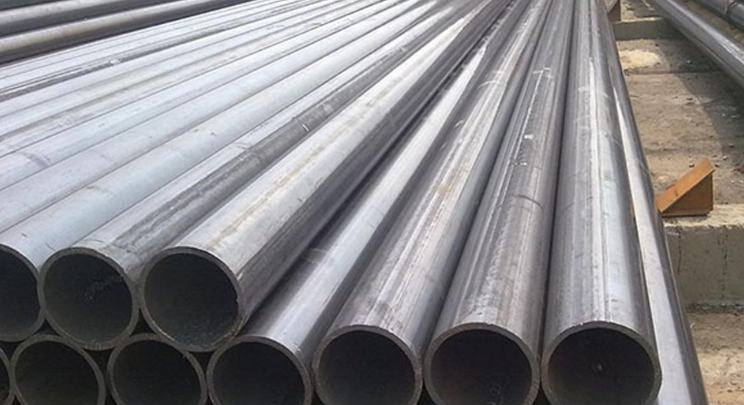High-frequency welding originated in the 1950s. It is an advanced welding process that uses the skin effect and proximity effect generated by high-frequency current to efficiently connect steel plates or other metal materials. The invention and increasing maturity of this technology have not only promoted the rapid development of the straight seam welded pipe industry, but also become the core link of ERW pipe production. The quality of high-frequency welding directly determines the overall strength, product quality and production efficiency of the welded pipe.
The production process of ERW welded pipes varies depending on the type of product. From the selection of raw materials to the forming of the final product, multiple processes are required, and the key to completing these processes is to be equipped with corresponding mechanical equipment and welding, electrical control and detection devices. These equipment and devices must be scientifically and reasonably configured and optimized according to the needs of the production process.
As a welded pipe manufacturer, a deep understanding of the basic principles of high-frequency welding, equipment structure and its working mode, as well as the key points of high-frequency welding quality control, is the basis for ensuring product quality and production efficiency, and is also a reflection of corporate competitiveness.
The demand for high-quality steel pipes in industries such as construction, energy, and transportation has surged in recent years. Among these, Electric Resistance Welded (ERW) steel pipes are widely recognized for their efficiency, durability, and cost-effectiveness. A critical process in manufacturing ERW steel pipes is the weld seam online heat treatment technology, which ensures superior mechanical properties, reliability, and longevity. This article delves into the importance of this technology, its processes, and how it aligns with industry standards.
What is ERW Steel Pipe Weld Seam Online Heat Treatment?
Weld seam heat treatment is a process applied to the welded area of ERW steel pipes to refine the grain structure, relieve residual stresses, and enhance mechanical properties. This process involves heating the weld seam to a specified temperature and cooling it at a controlled rate, either through air or water quenching. Online heat treatment signifies that this process occurs immediately after the welding operation, integrated seamlessly into the production line.
Online heat treatment process of welds
Basic principle of high-frequency welding
High-frequency welding uses the skin effect and proximity effect generated by high-frequency current to quickly heat the edge of the tube to a molten or plastic state, and then achieves welding through extrusion. Its advantages include:
No need for additional filler metal.
Fast heating speed and high production efficiency.
High-frequency welding process
Typical process flow includes:
Feeding and inspection: Check the specifications, surface and shear surface of narrow strip steel.
Shear butt welding: Ensure the flatness of the joint and avoid welding defects.
Loop storage: Adjust the tension of the steel strip to ensure stable feeding.
Forming: Adjust the W roller and extrusion roller to ensure the symmetry of the tube and the quality of the weld.
High-frequency welding: Use high-frequency current to heat and weld to form a smooth weld.
Burr removal and cooling: Remove internal and external burrs to reduce stress.
Sizing and straightening: Ensure the dimensional accuracy of the pipe.
Detection and packaging: Perform mechanical property tests and weld flaw detection.
High-frequency welding quality control
Weld stability
The quality of the weld is affected by the distance between the forming pass and the extrusion pass. If the distance is too large, the stability of the edge of the tube billet decreases, and it is easy to cause the problem of uneven external burr size.
Resistor assembly
The resistor assembly in the high-frequency welding equipment needs to have good water cooling capacity and accurate position adjustment to ensure the consistency of weld quality. When the assembly leaks, it needs to be shut down for inspection in time.
Burr removal
The internal and external burrs must be smooth and uniform, and no residual burrs or overlapping welding should occur.
Improvement of structure after heat treatment
Online heat treatment of welds can improve the microstructure, reduce stress concentration, and improve the mechanical properties and toughness of welds.
Technical points of online heat treatment
Heating temperature control: Too high temperature will cause grain coarsening, and too low temperature will make it difficult to completely eliminate stress.
Cooling speed adjustment: By adjusting the cooling medium and speed, avoid the formation of hardened structure.
Flaw detection: Real-time monitoring of welds for defects such as pores and inclusions.
Weld quality inspection
Mechanical property test: Including flaring, flattening and tensile tests to ensure that the weld meets the standard requirements.
Microstructure inspection: Observe the metallographic structure of the weld area and evaluate the heat treatment effect.
Nondestructive testing: Use ultrasonic or X-ray testing to ensure there are no defects inside the weld.

Importance of Weld Seam Heat Treatment for ERW Steel Pipes
1. Improved Mechanical Properties
The welding process introduces heat and deformation to the steel, potentially weakening the weld area. Heat treatment ensures:
Uniform hardness across the pipe.
Enhanced tensile strength and ductility.
Improved resistance to cracking under pressure or stress.
2. Stress Relief
Residual stresses can form in the weld seam due to rapid cooling after welding. These stresses may cause deformation or failure during use. Heat treatment mitigates this by stabilizing the metal structure.
3. Compliance with Standards
Industry standards such as
API 5L,
ASTM A53, and EN 10217 require specific mechanical properties for ERW steel pipes. Online heat treatment ensures compliance with these rigorous specifications.
Conclusion
The integration of weld seam online heat treatment technology in ERW steel pipe manufacturing is a game-changer for industries requiring reliable and high-performance steel pipes. By enhancing mechanical properties, ensuring compliance with standards, and reducing costs, this technology represents a pivotal step forward. For businesses and industries seeking premium-quality steel pipes, investing in heat-treated ERW products is the key to long-term success.






 English
English Español
Español بالعربية
بالعربية











 Phone :
Phone :  Whatsapp :
Whatsapp :  Email :
Email : 


